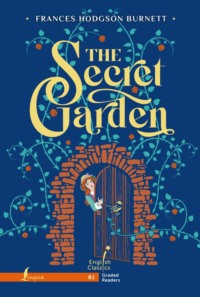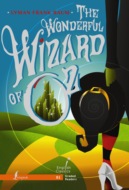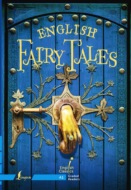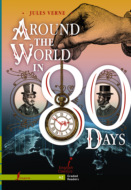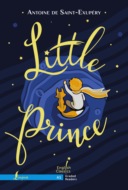Czytaj książkę: «Таинственный сад / The Secret Garden. B1»
© Грек А. А., адаптация, словарь, упражнения, 2023
© ООО «Издательство АСТ», 2023
Burnett’s Secret Garden
Frances Hodgson Burnett (1849–1924) was a British-American writer. She started her writing career at the age of seventeen in order to support her family and turned it into the main source of her income. She wrote stories for both children and adults and worked as a playwright by turning them into theatre plays.
By the time Burnett published The Secret Garden (1911), she had become a well-known author. Her bestselling books Little Lord Fauntleroy and A Little Princess had sold hundreds of thousands of copies. Still, the writer called The Secret Garden her favourite.
It is interesting to know that the little robin – one of the vital and most charming characters – was in fact inspired by a real English robin. The bird often joined Burnett while she was writing in the rose garden near Maytham Hall, Burnett’s house in England. The writer became friends with the bird and even tried to speak to it!
Before-Reading Questions
1. The novel’s working title was Mistress Mary. Later, the author changed it to The Secret Garden. What is the difference between the two titles? What plot would you expect from a children’s novel titled Mistress Mary?
2. What myths about gardens can you remember? Try to find at least one more in books or on the Internet.
3. Do you know what English moors look like? Find the pictures of them on the Internet and describe the landscape. What feelings does it awake in you?
Chapter 1
Little Miss Mary
Nobody seemed to care about Mary. She was born in India, where her father was a British official. He was busy with his work, and her mother, who was very beautiful, spent all her time going to parties. So an Indian woman, Kamala, was paid to take care of the little girl. Mary was not a pretty child. She had a thin angry face and thin yellow hair. She was always giving orders to Kamala. Mary never thought of other people, but only of herself. In fact, she was a very selfish, disagreeable, bad-tempered little girl.
One very hot morning, when she was about nine years old, she woke up and saw that instead of Kamala there was a different Indian servant by her bed.
‘What are you doing here?’ she asked crossly. ‘Go away! And send Kamala to me at once!’
The woman looked afraid. ‘I’m sorry, Miss Mary, she – she – she can’t come!’
Something strange was happening that day. Some of the house servants were missing and everybody looked frightened. But nobody told Mary anything, and Kamala still did not come. So at last Mary went out into the garden, and played by herself under a tree. She pretended she was making her own flower garden, and picked large red flowers to push into the ground. All the time she was saying crossly to herself,
‘I hate Kamala! I’ll hit her when she comes back!’
Just then she saw her mother coming into the garden, with a young Englishman. They did not notice the child, who listened to their conversation.
‘It’s very bad, is it?’ her mother asked the young man in a worried voice.
‘Very bad,’ he answered seriously. ‘People are dying like flies. It’s dangerous to stay in this town. You should go to the hills, where there’s no disease.’
‘Oh, I know!’ she cried. ‘We must leave soon!’
Suddenly they heard loud cries coming from the servants’ rooms, at the side of the house.
‘What’s happened?’ cried Mary’s mother wildly.
‘I think one of your servants has just died. You didn’t tell me the disease is here, in your house!’
‘I didn’t know!’ she screamed. ‘Quick, come with me!’
And together they ran into the house.
Now Mary understood what was wrong. The terrible disease had already killed many people in the town, and in all the houses people were dying. In Mary’s house it was Kamala who had just died. Later that day three more servants died there.
Allthrough the night and the next day people ran in and out of the house, shouting and crying. Nobody thought of Mary. She hid in her bedroom, frightened by the strange and terrible sounds that she heard around her. Sometimes she cried and sometimes she slept.
When she woke the next day, the house was silent.
‘Perhaps the disease has gone,’ she thought, ‘and everybody is well again. I wonder who will take care of me instead of Kamala? Why doesn’t someone bring me some food? It’s strange the house is so quiet,’
But just then she heard men’s voices in the hall.
‘How sad!’ said one. ‘That beautiful woman!’
‘There was a child too, wasn’t there?’ said the other. ‘Although none of us ever saw her.’
Mary was standing in the middle of her room when they opened the door a few minutes later. The two men jumped back in surprise.
‘My name is Mary Lennox,’ she said crossly. ‘I was asleep when everyone was ill, and now I’m hungry.’
‘It’s the child, the one nobody ever saw!’ said the older man to the other. ‘They’ve all forgotten her!’
‘Why was I forgotten?’ asked Mary angrily. ‘Why has nobody come to take care of me?’
The younger man looked at her very sadly. ‘Poor child!’ he said. ‘You see, there’s nobody left alive in the house. So nobody can come.’
In this strange and sudden way Mary learnt that both her mother and her father had died. The few servants who had not died had run away in the night. No one had remembered little Miss Mary. She was all alone.
Because she had never known her parents well, she did not miss them at all. She only thought of herself, as she had always done.
‘Where will I live’ she wondered. ‘I hope I will stay with people who’ll let me do what I want.’
At first she was taken to an English family who had known her parents. She hated their untidy house and noisy children, and preferred playing by herself in the garden. One day she was playing her favourite game, pretending to make a garden, when one of the children, Basil, offered to help.
‘Go away!’ cried Mary. ‘I don’t want your help!’
For a moment Basil looked angry, and then he began to laugh. He danced round and round Mary, and sang a funny little song about Miss Mary and her stupid flowers. This made Mary very cross indeed. No one had ever laughed at her so unkindly.
